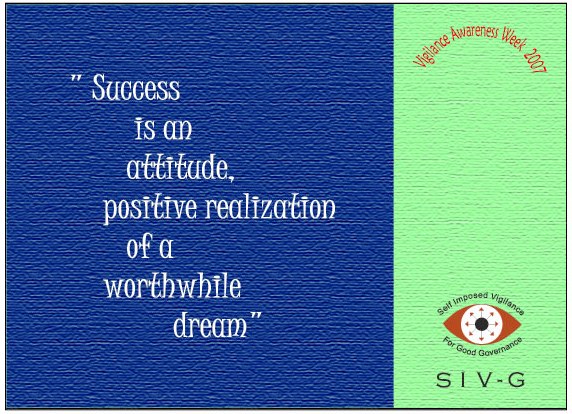The gentleman, a recently retired government officer, entered the star hotel to attend a get together of the retired officers’ association. ‘Good morning, Sir. Which floor?’, asked the Lift Operator as he entered the lift. ‘I want to go to the Convention Hall where there is a meeting of retired officers. Which floor is that?’ asked the gentleman while replying. ‘Its L-1 Sir’, said the Lift Operator pleasingly, meaning thereby ‘Level-1’ and pressed L-1 button. The disgusted gentleman who till recently before his retirement was handling procurements in the organization, lamented, ‘Oh my God, the L-1 is not leaving me, even after my retirement!’.
Another day in another organization, a senior PR executive of a PSE in the Zonal Office, talking to his counterpart in the headquarters over telephone. He was, in fact, referring to a huge donation that the company is making as a part of their CSR to a leading charity hospital in the city, for which a cheque was sent through a courier from the head office. The PR executive said, ‘No Sir, the cheque has not yet reached the Hospital. Perhaps it was sent through the L-1 Courier. That is why it is taking so long.’!
Yet another day, in yet another organization, the senior officer asked, ‘why is this tap leaking?’. ‘Sir, the taps were supplied by the L-1 party. That is the reason it is leaking’, the reply came!
On another occasion, ‘Why did the wall collapse?’, asked the inspecting official. ‘Sir, this was constructed by the L-1 contractor and we cannot expect anything more from him’, came the reply.
There are innumerable questions and answers that circle around in government organizations, particularly the public sector organizations that revolve around the L-1.
There would not be a single training program or workshop on ‘vigilance’ in which the issue of L-1 would not have been raised. Everywhere, unfortunately, the L-1 is looked down as something, which is intended to be cheap and meant to fail! In fact, successive failures, poor performance and many drawbacks are very conveniently taking the shelter of L-1. Perhaps all these are heading us towards the ‘L1 syndrome’, apparently for the sake of convenience.
In all these, CVC became the easy target to blame, as the instruction on L-1 was issued by CVC on 18.11.1998. The guidelines of CVC says, ’Tenders are generally a major source of corruption. In order to avoid corruption, a more transparent and effective system must be introduced. As post tender negotiations are the main source of corruption, post tender negotiations are banned with immediate effect except in the case of negotiations with L1 (i.e. Lowest tenderer)’. Subsequently, various clarifications have also been issued by CVC and as of now even negotiations with L-1 should be done only as an exception and not routine for obvious reason.
In fact, a little reflection on why the CVC issued such an instruction on L-1 would open the eyes and would help to overcome the so-called L-1 syndrome. Procurement has been a major area of corruption throughout the history. We read about the enormous powers vested with the officials handling wartime procurements, which provided ample opportunity and greater scope for corruption. The World Bank also has been emphasizing a lot on transparent procurement policies and procedures particularly when it comes to public procurement. Recognizing these factors CVC focused on the public procurement system and process. In fact, prior to the CVC guidelines on L-1, a situation prevailed that after opening the price bids and making the comparative statements, the miscreant elements who were handling the procurement have been choosing their favorite contractor/vendor, immaterial whether they were L-5 or L-6 or whatever. They had the option of negotiating with whomever they want and brought their favorites below the L-1 to ultimately award the contract for some consideration. This is certainly a major breeding ground for corruption and rightly CVC imposed the ban on negotiation.
In fact, what has not been properly understood or appreciated about the L-1 issue is that it is not all about price alone. It is about the lowest price for the desired quality. Most of the time, the problem comes when we are not clear about the quality that is desired. With proper technical evaluation, it should be possible to keep the inferior suppliers / vendors / contractors away from the race so that the question of L-1 of inferior quality does not arise. If proper care is not taken at the time of technical evaluation, then there is every possibility that inferior suppliers and vendors would enter the arena and level playing field becomes distorted. What is very important is that the desired quality has to be translated clearly in the form of technical specification so that the technical evaluation becomes a meaningful exercise.
After all, the proof of the pudding is in eating. The guidelines of CVC on L-1 stood its time of test despite of the so-called L-1 syndrome. The L-1 guidelines of CVC are in its 12th year of operation and are being followed by all the government organizations. Perhaps, what is needed is proper appreciation of the spirit behind the L-1 guidelines, which will help in overcoming the so-called L-1 syndrome and cleanse the system of public procurement in the days ahead.

